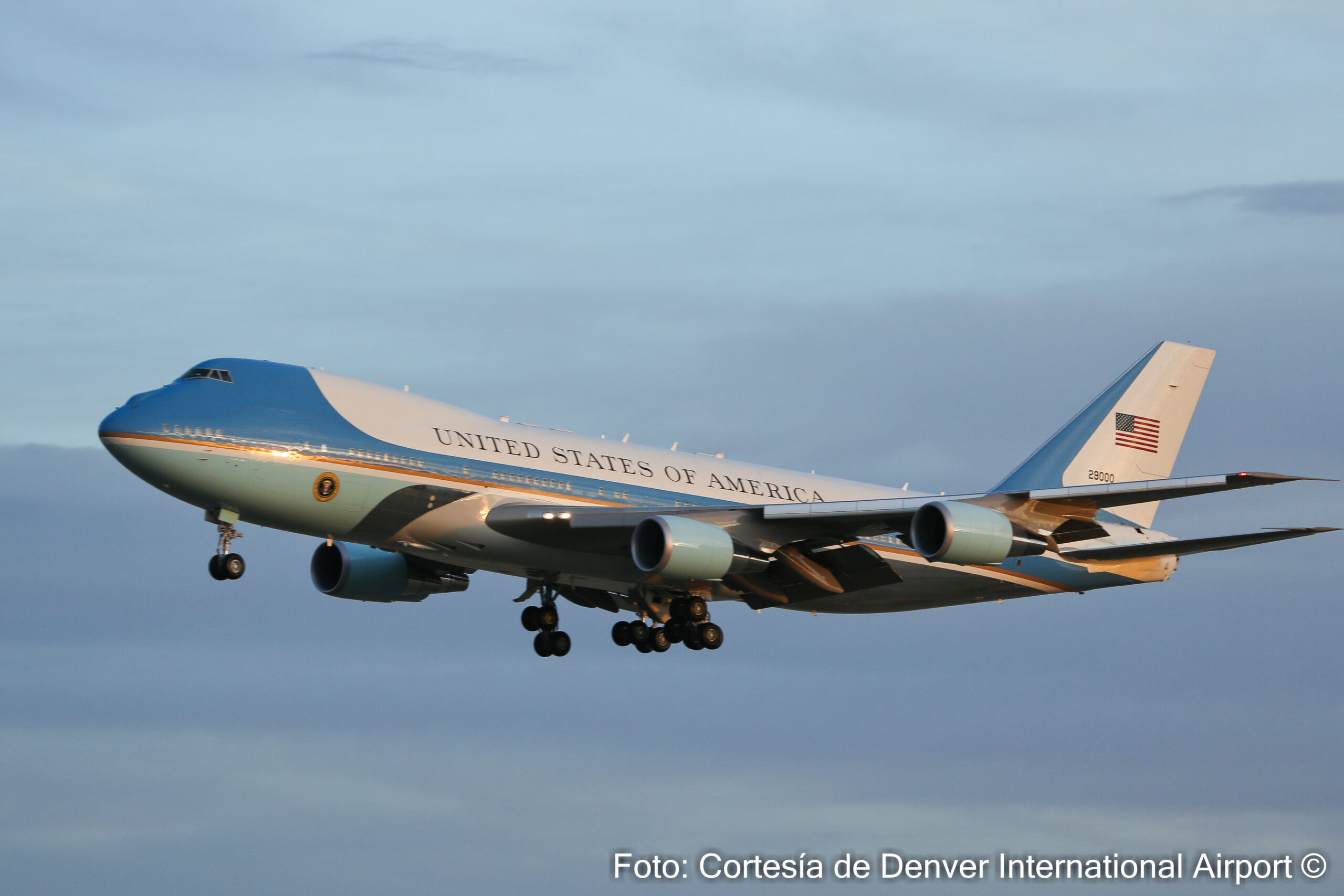Joe Biden’s administration decided not to adopt the red, white and blue paint scheme proposed by his predecessor in office, Donald Trump, for the two Boeing VC-25Bs that will replace the current presidential aircraft (popularly known by its callsign, Air Force One).
As reported by POLITICO, a new study showed that the dark blue color intended to be used could cause overheating problems in some of the aircraft components. The livery, used since the John F. Kennedy administration, has softer tones on the engines and lower fuselage.

Current look of the Air Force One
Shortly after taking office, President Trump became personally involved in the negotiations for the replacement of the presidential fleet. In February 2017, he announced that his administration had succeeded in reducing the contract price with Boeing by «more than one billion dollars» Shortly thereafter, the manufacturer agreed to a fixed-price contract with the Air Force. That way, the company would be responsible for any cost overruns.
According to U.S. Air Force sources, the new scheme would require additional modifications to cool some of the components. The work would increase the total cost. For that reason, the White House decided to scrap Trump’s proposed scheme.
The decision is good news for Boeing, which would have had to bear the costs associated with the modifications to avoid overheating. Although it is not known what the two aircraft will look like, it is estimated that they would be similar to the current presidential aircraft.
The back and forth regarding the new look of Air Force One is not the only controversy surrounding the replacement of the White House branch office in the skies. In 2020, the price of the modified Boeing 747-8i manuals generated controversy and raised suspicions about the relationship between the State and Boeing.
As revealed in the fiscal 2023 budget documents, the planes might not be ready to fly for another four years. In that case, the replacement would occur two years later than originally planned.
See also: Breaking: United States eliminates pre-departure testing requisite














